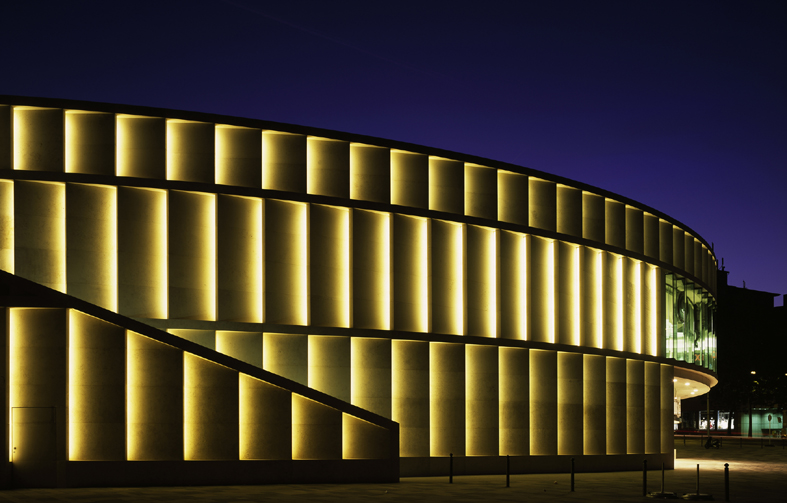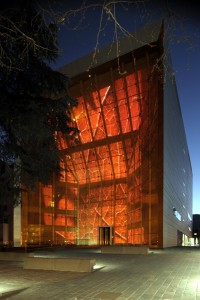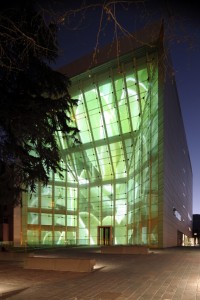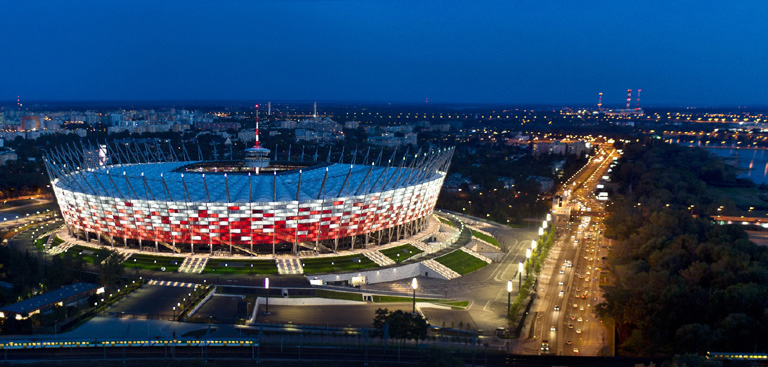The recognition of architecture within densely built environments depends more and more on a unique night-time appearance. Facades have become signature design elements and multi-functional with lighting gaining importance in that respect. Facade-lighting is not just accentuating, but turned into an active means of communication by providing an additional layer of meaning or room for interpretation.
 One can find a variety of examples when looking at growing skylines across Asia and beyond. Some of them turned into icons that people identify with. But what is it that makes projects successful on the long term, creating a ‘face’ to welcome people and leaving an impression after they left? We strongly believe that integrating light from early concept design adds value to a project in this respect and when designing destinations.
One can find a variety of examples when looking at growing skylines across Asia and beyond. Some of them turned into icons that people identify with. But what is it that makes projects successful on the long term, creating a ‘face’ to welcome people and leaving an impression after they left? We strongly believe that integrating light from early concept design adds value to a project in this respect and when designing destinations.
 The initial brief and motivation for a development are essential and contribute to the quality of a project. In a perfect world, each discipline would be given the time required for its task. Reality often confronts us with the opposite situation with decisions being postponed, reversed or overruled. But even then it is the projects where one is having respect for each other’s responsibilities and demands that are showing best results. By providing and asking for relevance one can achieve the same.
The initial brief and motivation for a development are essential and contribute to the quality of a project. In a perfect world, each discipline would be given the time required for its task. Reality often confronts us with the opposite situation with decisions being postponed, reversed or overruled. But even then it is the projects where one is having respect for each other’s responsibilities and demands that are showing best results. By providing and asking for relevance one can achieve the same.
 This should not justify excessive installation efforts or high capital investment by all means, but should be understood as identification with a well-thought idea. With technological development there come plenty of options. Eventually, a competition takes place to feature the most outstanding, brightest, fastest, largest or colorful effect asking for our attention. Unfortunately human beings tend to adapt, when continuously being exposed to the same visual information, they get used to it and at some point just don’t recognize it anymore. Depending on the type of building and its design intent, it is acceptable and to some point even desirable to become normal meaning established.
This should not justify excessive installation efforts or high capital investment by all means, but should be understood as identification with a well-thought idea. With technological development there come plenty of options. Eventually, a competition takes place to feature the most outstanding, brightest, fastest, largest or colorful effect asking for our attention. Unfortunately human beings tend to adapt, when continuously being exposed to the same visual information, they get used to it and at some point just don’t recognize it anymore. Depending on the type of building and its design intent, it is acceptable and to some point even desirable to become normal meaning established.
Not every project is a landmark and many designs actually live from doing less. But the task is still to provide branding and a recognizable appearance that is in line with the architectural design intent to create an attractive venue. Eventually the design may live on one unique feature as it is the case with the retail development’s facade featured above We often encounter appreciation for a museum of contemporary art where light is an integral part of the building’s design and function. There artificial light, natural light and media content merge into one thing, they cannot be separated from each other nor from the architecture of the building without having an effect on the overall performance. As much as daylight quality depends on the selection of glass, the media application does so as well.
 Simultaneously the requirements for media projection that’s visible from outside define daylight character transmitted towards inside. Having to fulfill these tasks to the satisfaction of everybody, detailing had a strong impact. It could be done successfully because provisions had been made during concept stage with the associated disciplines being involved. Eventually it is like different sides of the same object – even if you cannot see all of them at the same time.
Simultaneously the requirements for media projection that’s visible from outside define daylight character transmitted towards inside. Having to fulfill these tasks to the satisfaction of everybody, detailing had a strong impact. It could be done successfully because provisions had been made during concept stage with the associated disciplines being involved. Eventually it is like different sides of the same object – even if you cannot see all of them at the same time.
It is nothing new that a strong design idea supports the design process as a whole. So one can allow this idea to help in defining character of light instead of lighting up the decisions that have been made. After all it is atmosphere of a place we keep in mind and the impression it leaves on us. As for media-facades, that is more than the initial lighting installation and integration, but continuously developing compatible content that keep the image alive.
Trained as an architect, German born Carla Wilkins has worked as a lighting designer in New York City, Cologne and Berlin and since 2010 teaches at the Berlin University of Arts. Since establishing Lichtvision in 1997, Wilkins has worked with the company in design and engineering and in architectural lighting design, on projects which range from museums to civic projects, high-end residential projects and commercial mixed-use developments.












